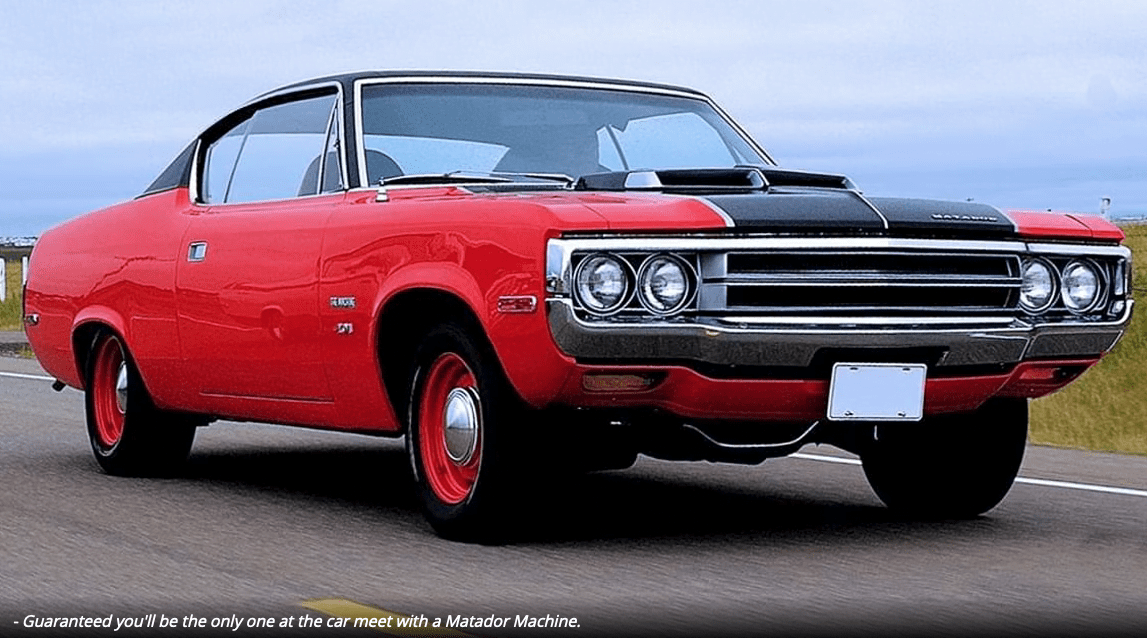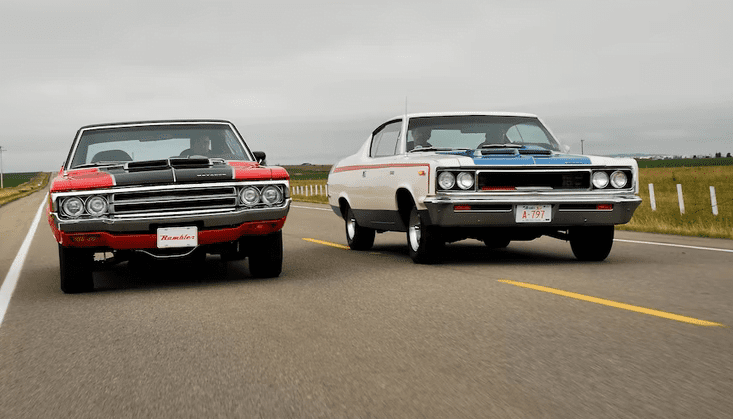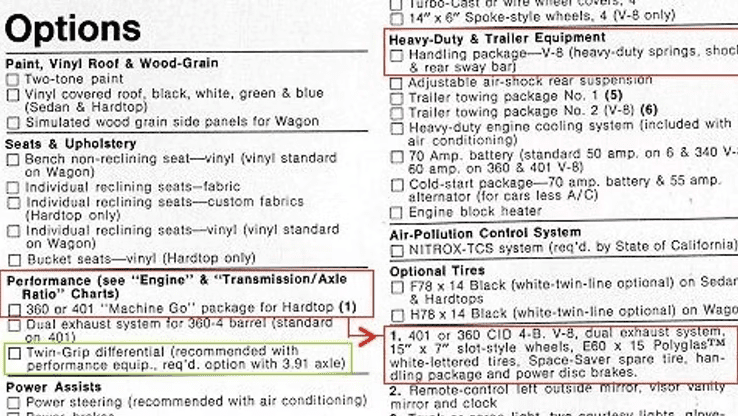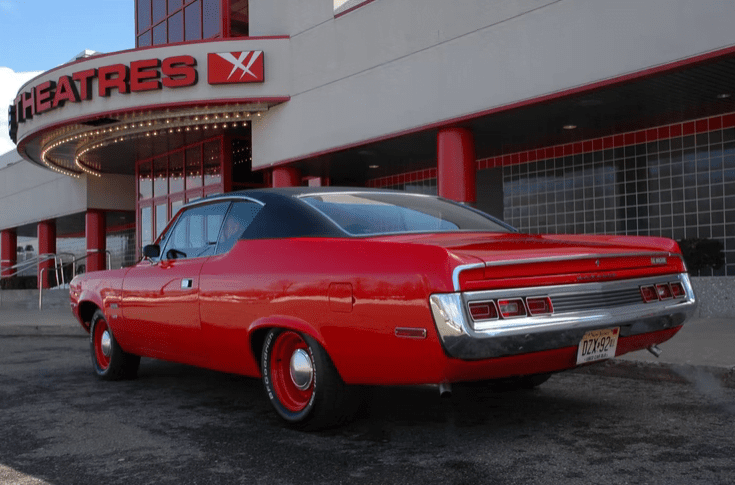The muscle car that was around for a blink of an eye.
I’ve always had a soft spot for AMC’s starting from the late 60’s. For a company with the fraction of the resources of its rivals, it put up a good fight and that was especially true in the muscle car days. Though AMC was reluctant at first to cater to the go-fast crowd, it eventually gave in with the handsome 1967 Rebel SST coupe equipped with the 343 (5.6 liter) V8. Next year they really got in the groove with the pretty and potent Javelin and AMX. 1969 saw the wild SC/Rambler and then the Rebel Machine of 1970, and to some extent, the 1971 Hornet SC/360. For many people, they think that’s the end of the line as far as performance models were concerned. For years I’ve heard of Matador Machines but always came to the conclusion that they were most likely home-made creations of people who desperately wanted “The Machine” to have continued into the Matador years. Then I decided to thoroughly research the matter.
Knowing that 1970 would be the final year for the well-established Rebel line, AMC decided to send it off with a bang in the form of the flamboyant and unforgettable Rebel Machine. It was not a strong seller with 2326 built, but it did leave enough of an impact that was not lost on enthusiasts. As the budget conscious company was betting heavily on their redesigned Javelin, and sportier Javelin AMX to take over as their main contenders in the pony/muscle car market, the Machine did not return as a separate model for 1971. However, they knew there were still some people out there who missed their chance at buying a mid-sized muscle car and if one looked carefully and checked the correct boxes when ordering their new Matador, they ended up with the “Machine Go” package and for all intents and purposes, a Matador Machine.
The 1970 Rebel Machine was powered by a potent 340 horsepower, 390 (6.4 liter) V8. That engine grew to 401 cubic inches (6.6 liter) the following year, but it did lose 10 horses. Torque remained the same at an impressive 430 lb-ft. While the loud red/white/blue paint job was no longer available, one could order the big V8, large 15 x 7″ slotted steel wheels with wide Goodyear white-lettered tires, power front disc brakes, 4 barrel carburetor, a heavy-duty Borg Wagner T-10 4-speed manual transmission, dual exhausts, 3.15 or 3.91 rear end, upgraded suspension, and various other performance goodies. At the time, AMC was involved with various racing programs, most successfully with the Trans-Am series which they won in 1971 and ’72. For those who wanted even more performance, certain authorized AMC dealerships were there to help. For people who felt the 6.6 liter engine was a bit too big, their other option was the 360 (5.9 liter) V8 that produced 290 horsepower.
It is estimated that between 45-60 Matador Machines were built in early 1971. The revised, second-edition brochures omitted most of the Go Machine-specific parts from the options list. One pretty much had to be in the right place at the right time to get a chance to order their own Machine. Interestingly, while the Go Machine package was limited to the 2-door hardtops, most of the various individual parts could be ordered on the 4-doors and station wagons. Theoretically, one could have bought a 401, 4-speed sedan or wagon, but I’ve never seen or heard of one. Still, I wouldn’t rule them out of existence, there are some very oddly-optioned cars out there that have come into the light after being stored away or forgotten for decades.
So what we have here is an extremely rare car. Of the handful that were built, there might be less than five still in existence, and that’s being very optimistic. If you’re in the market for one, -and good luck finding an example, provenance would be very difficult to prove because AMC didn’t use a specific VIN to denote the Matador Machine, as it was an options package on an existing model. Your best bet would be if the original bill of sale, build sheet, or window sticker was available with the car, otherwise it’s down to word-of-mouth and as we all know, that’s a very risky endeavour when buying something that’s claimed to be factory original.
1971 Matador Machine & 1970 Rebel Machine
Tick the right boxes to build your Machine. Note the Twin-Grip differential was not part of the Performance package and had to be ordered separately.
A restored and documented Matador Machine.




